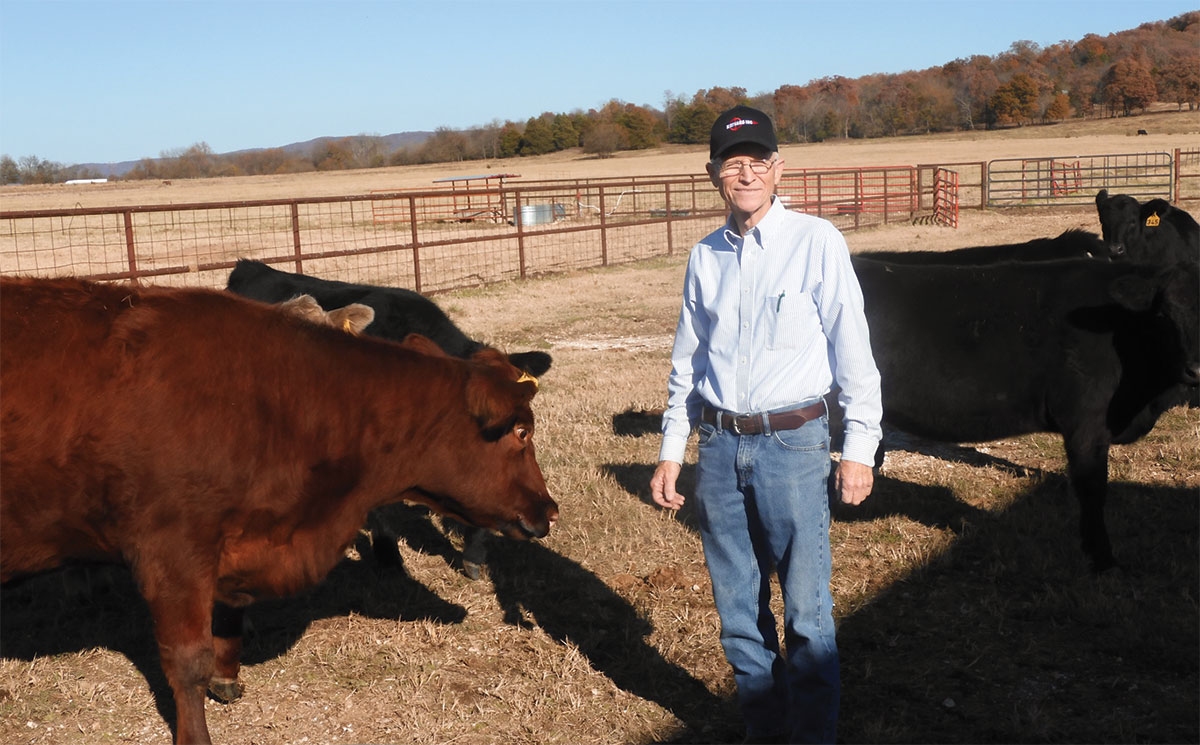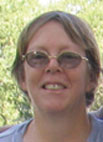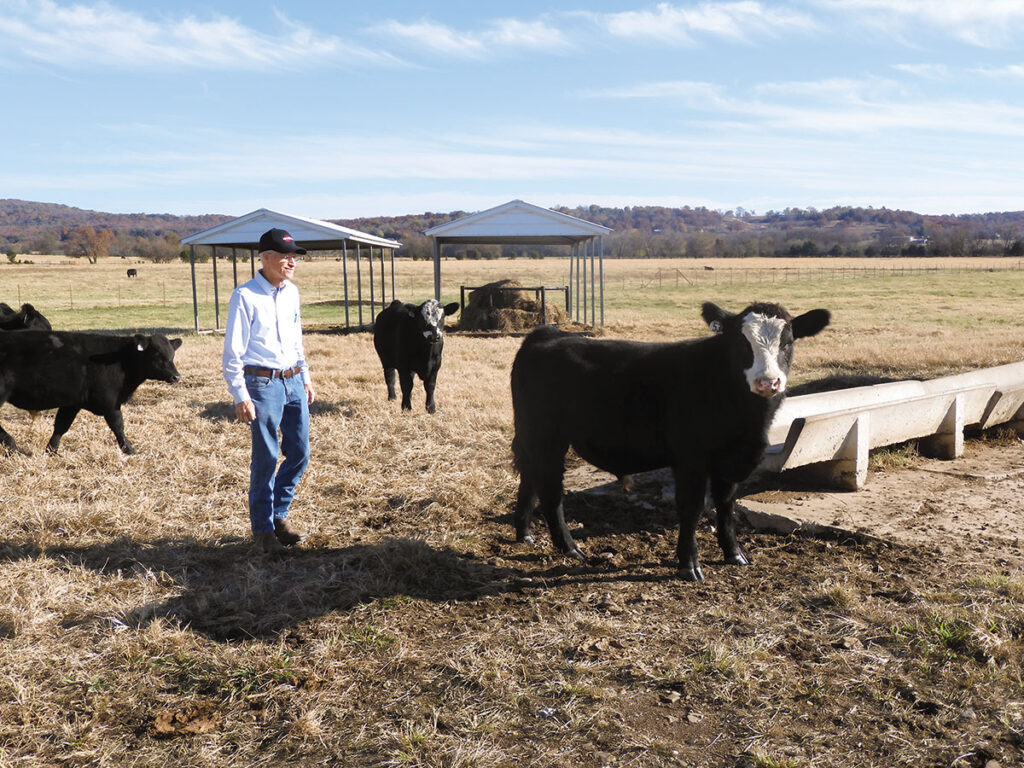
Ron Aman continues to raise cattle on his family’s farm that began in 1918
PRAIRIE GROVE, ARK. – John B. and Emma J. Whitaker came to Arkansas from Mississippi in 1918 and purchased 210 acres in Prairie Grove, Ark.
More than 100 years later, the land is still a part of the family and is still used for a cow/calf operation.
“It’s a blessing the land never sold during the Depression. There was a time when John and Emma’s four children signed a loan to pay the taxes,” explained John and Emma’s grandson Ron Aman, who runs the cow/calf operation on the same land today. “The only things left from the early days are the footings from the old windmill and the little building that marks the year the farm was established.”
Ron’s parents, Dan and Fawnita, used the land in the 1980s and 1990s for a cow/calf operation. Dan also owned a gas station in Prairie Grove, selling tires, welding and doing repairs, property Ron’s mother still owns.
Ron worked at the station as a teenager with his older brother Kenny while working with his parents’ cattle. His father would also custom bale hay and combine wheat and fescue for others.
“I loved Dad’s old combine and remember it was a smooth ride,” Ron reminisced. “I never minded mowing around it when we no longer used it though we did use it as a landmark for a while.”
In the 1980s, his parents bought a mixed breed herd of 50 to 60 highly productive older cows from Carroll Rainwater near Natural Dam. Ron will never forget an early, blistering cold winter day when he and his dad decided to put the herd in the barn.
“The cattle were not in favor of that idea and smartly ran to the woods where they handled the cold just fine,” Ron remembered. “I, however, was not. My dad was yelling, ‘get back in the truck’ because he noticed my nose was glazing over and the smile frozen on my face.”
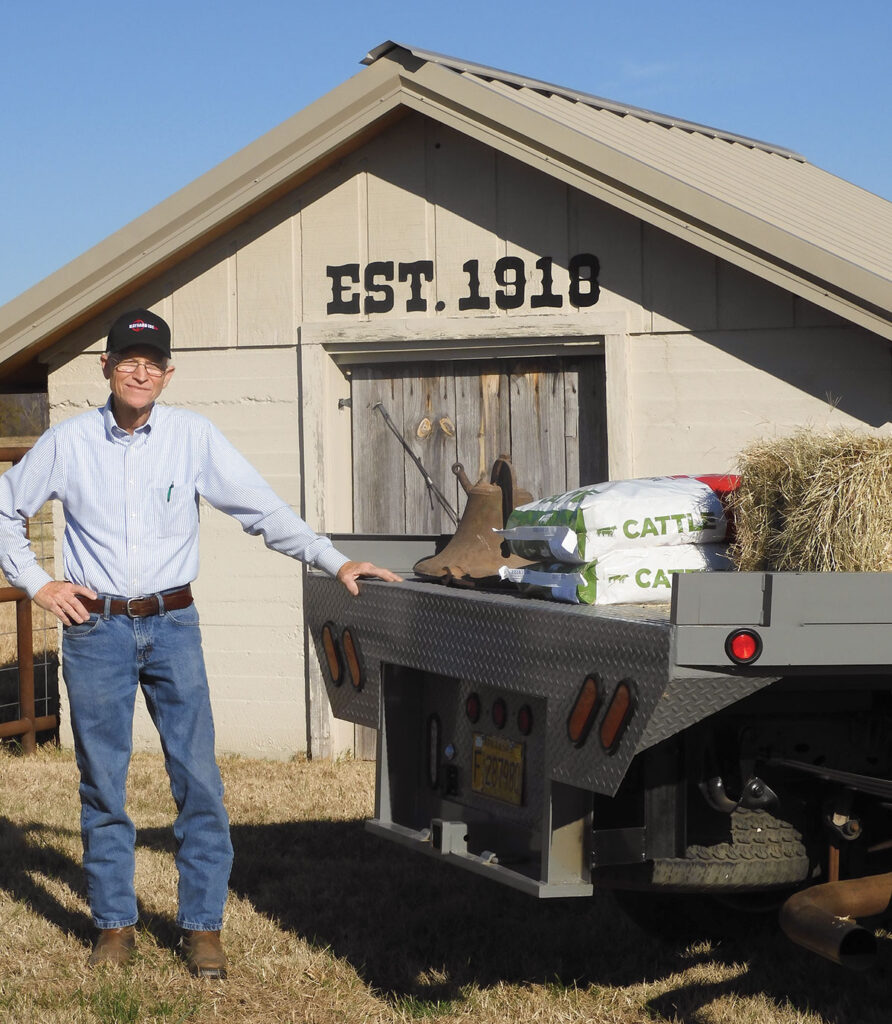
In time, the Amans entered into a partnership with Alex and Lois Lacey in Farmington, buying and selling registered Beefmaster cattle. Eventually, Dan retired from the town business as well as the cattle business, subsequently leasing the land to others.
Ron moved on to building fence and working cattle for other local cattlemen in his spare time. He worked several off-the-farm jobs, with the current job being with Maynard, Inc. During those years, he married and had a daughter Emily who has gifted him two grandchildren.
In 2010, Ron decided to lease the farm for his own cow/calf operation and purchased most of his cattle from the man who previously leased the land. It was overgrown with invasive honey locust trees known for long and vicious thorns. Ron, with the help of family and friends, cut, pulled, piled and burned thousands of them to reclaim the land. Not surprisingly, Ron makes land care a priority. He fertilizes as needed with chicken litter and sprays Grazon to control weeds. He applied 210 tons of ag lime this year alone.
The Aman herd is comprised of 50 SimAngus mommas bred by Angus and SimAngus bulls that stay with the cows all year. Ron’s herd has never synced, so he sells steers and some bull calves five times a year, when he has groups that have been weaned from 60 days up to yearlings weighing 500 to 750 pounds. He likes a young herd and sells cows before they reach 10 years old and still have good value. On the other hand, heifers are primarily sold by private treaty, as are the remaining bull calves.”
The herd is worked twice a year. A quick phone call is all that is needed to round up enough help from loyal friends and Ron’s nephew, James Maynard. A dart gun primarily administers medication because he believes it is less stressful. He drives around the herd until the targeted animal looks away. He then shoots the dart with the animal not knowing where the dart came from. Ron has used cattle rubs to protect his herd from flies, but now hand sprays each animal, resulting in less pinkeye spreading through the herd.
Weaned calves are fed 4 pounds of a mix ration per day. Cows with calves by their side consume grass and hay and are provided 17 to 25 percent protein tubs as needed. Ron’s management protocols ensure that loose mineral and salt are always available. The cattle drink from two ponds and city water.
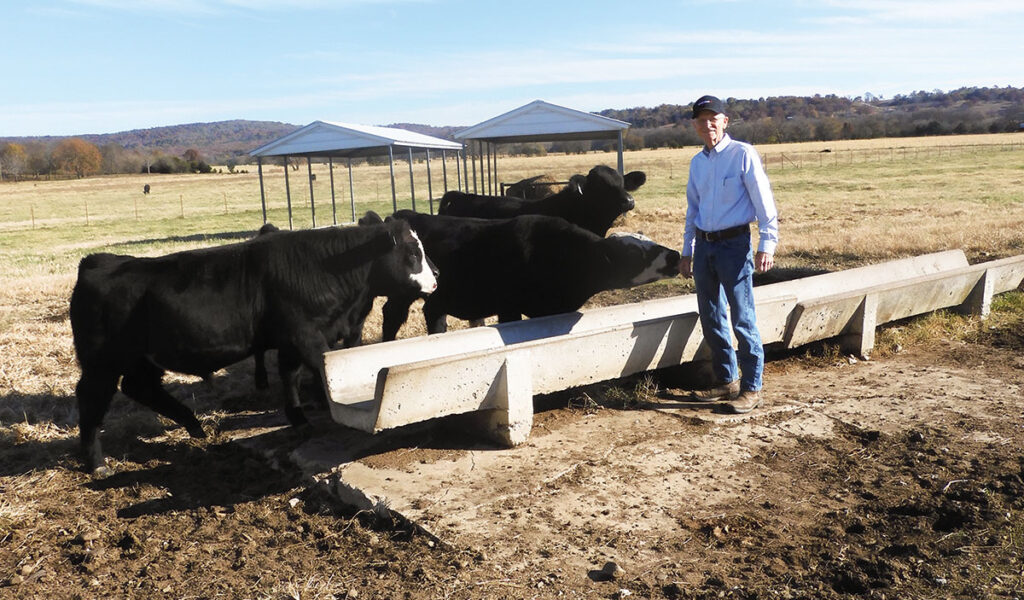
A neighbor across the road allows Ron to hay his 35 acres, with James having another 35 acres producing 400 to 500 round bales a year. As a special treat for the cattle, Ron also purchases high-quality square bales from other farmers in Prairie Grove, like Warren Napier and Stacy Luginbuel.
James used to keep his cattle at his own farm, but a huge oak tree fell on a fence corner where four pastures met, so they moved to Ron’s. Those cattle simply never returned home. Ron finds James to be a good hand, strong, and a big help with things that are hard for Ron to do. They hay together and are partners on equipment.
“My great-grandparents would be proud of what we do with their land and of the lives we live,” Ron said. “I’m glad the farm is still in the family because farming is a great way of life.”

